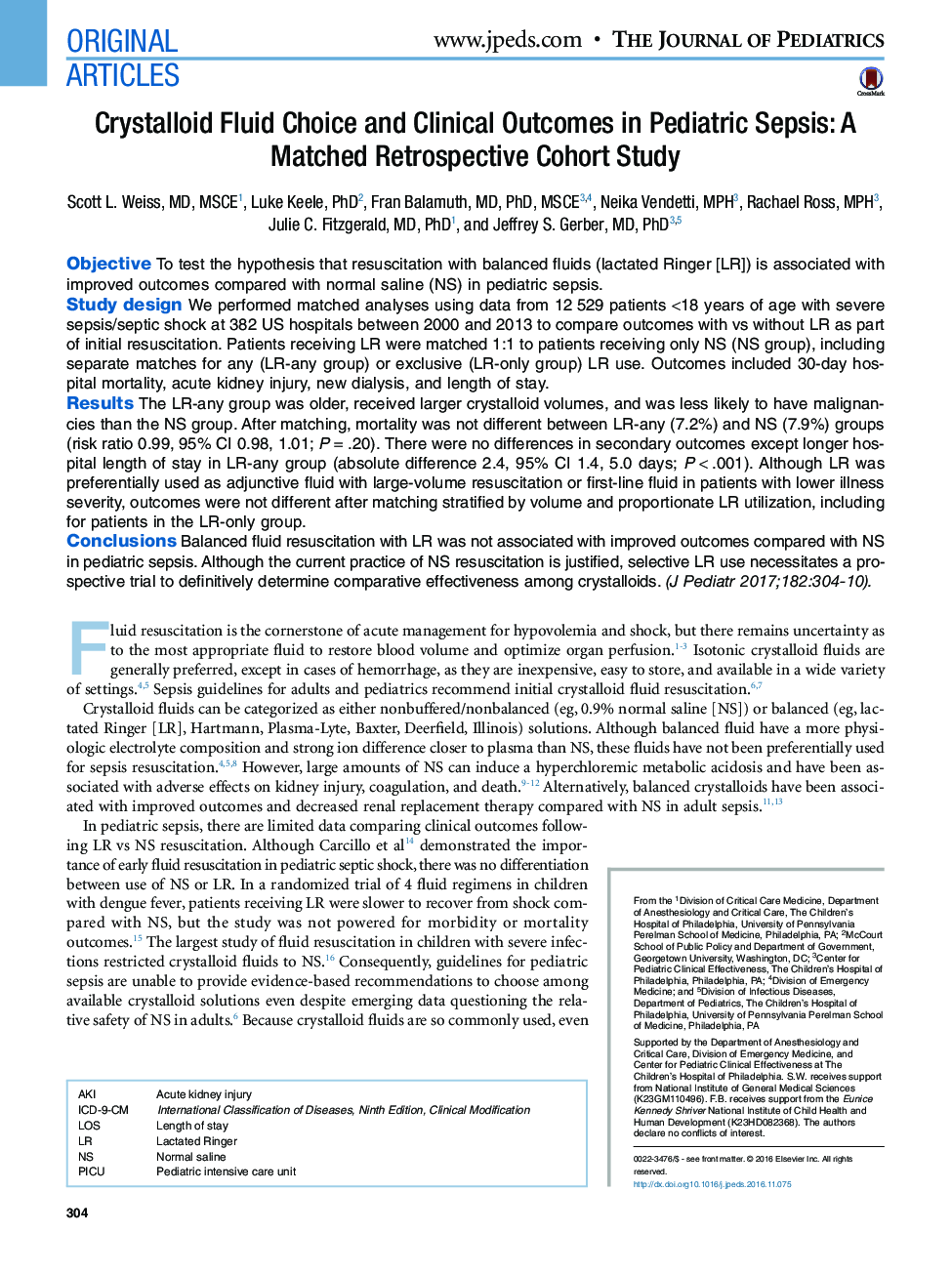| Article ID | Journal | Published Year | Pages | File Type |
|---|---|---|---|---|
| 5719690 | The Journal of Pediatrics | 2017 | 17 Pages |
ObjectiveTo test the hypothesis that resuscitation with balanced fluids (lactated Ringer [LR]) is associated with improved outcomes compared with normal saline (NS) in pediatric sepsis.Study designWe performed matched analyses using data from 12â529 patients <18 years of age with severe sepsis/septic shock at 382 US hospitals between 2000 and 2013 to compare outcomes with vs without LR as part of initial resuscitation. Patients receiving LR were matched 1:1 to patients receiving only NS (NS group), including separate matches for any (LR-any group) or exclusive (LR-only group) LR use. Outcomes included 30-day hospital mortality, acute kidney injury, new dialysis, and length of stay.ResultsThe LR-any group was older, received larger crystalloid volumes, and was less likely to have malignancies than the NS group. After matching, mortality was not different between LR-any (7.2%) and NS (7.9%) groups (risk ratio 0.99, 95% CI 0.98, 1.01; Pâ=â.20). There were no differences in secondary outcomes except longer hospital length of stay in LR-any group (absolute difference 2.4, 95% CI 1.4, 5.0 days; Pâ<â.001). Although LR was preferentially used as adjunctive fluid with large-volume resuscitation or first-line fluid in patients with lower illness severity, outcomes were not different after matching stratified by volume and proportionate LR utilization, including for patients in the LR-only group.ConclusionsBalanced fluid resuscitation with LR was not associated with improved outcomes compared with NS in pediatric sepsis. Although the current practice of NS resuscitation is justified, selective LR use necessitates a prospective trial to definitively determine comparative effectiveness among crystalloids.
